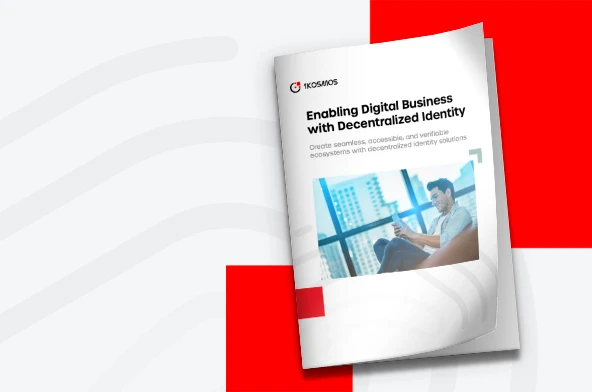Cognitive Computing: Creating a Dent and Changing the World
The forecast is frightening: Robots will take over all manual labor and self-generating code will automatically spin out the algorithms once developed by statisticians and programmers. Humans will become obsolete. What will mere mortals do all day long?
Ride captive as our self-driving cars take us on a sentimental journey to see the parking lots where shopping malls used to be?
Here it sounds Interesting! Yes this is true because of Cognitive Computing
What is Cognitive Computing?
A cognitive computing means creating neural networks and apply the deep learning algorithm from cognitive science to build systems that simulate human thought processes.
The seeds for Artificial Intelligence were first said to have conclusively germinated way back in 1997 when IBM’s Deep Blue defeated Gary Kasparov, the defending chess world champion then. It was the first instance when a computer under tournament conditions had defeated a reigning world champion. This was the first example of computers catching up with the human intelligence.
Cognitive computing is also attracting a lot of attention from chatbots. Chatbots (powered by natural language processing) enable us to automate the first touch, and even complex, interactions with customers. Depending on the organization’s strategy, chatbots can be used either as a triage before speaking to a real person or for transactions — enabling end-to-end execution. Building on the insurance example above, chatbots could be used to gather the initial information from a customer to support a claim and even to communicate updates proactively throughout the process.
With the help of Cognitive Computing Self Learning Feature of Virtual Assistant help to behave the chatbot as a Human-Like assistant. So With the help of chatbot today, bots will do all of the searchings for you! Their job is to provide you best recommendation job for you.
Today’s Time major Companies like Microsoft, Amazon, IBM provide you the API as service so you can develop the solution and solution provider help you in selecting the Algorithm, DataSet, and increase the Accuracy of prediction. For Example Face Recognition, Video Analysis, OCR, Handwritten, speech recognition, custom vision, vision API etc provided by Microsoft, Amazon, IBM.
Granted that we have already seen some truly fabulous new capabilities come to light: in image recognition and analysis, for example, where the reading of various kinds of X-rays and complex medical scans or the interpretation of reconnaissance photos or the process of identifying defects in semiconductor manufacturing fabs may well be fully automated in the near future. This breakthrough was in no small part the result of Google’s determination to make a big bet on the newly accessible technology of deep neural networks. The bet involved loading up teams of hundreds of researchers, buying companies whose people were deeply knowledgeable in the strengths and weaknesses of the techniques, and investing in new hardware infrastructure to support the processing of analytics across big data loads.
Let’s Have more talk about Deep learning applications.
A Diverse Set of Deep Learning Applications
Today’s time deep learning is much popular because it has many uses and can be applied to many applications, including:
Speech to text – Deep recurrent networks, a type of deep learning, is really good at interpreting speech and responding accordingly. You can understand deep learning easily by looking at personal assistant chatbot. Just say, OK Google or Hey, Siri, before any question, and more often than not, your device will respond with the correct answer.
Bots can be work via text or speech, it understands context using natural language interaction and with the help of deep learning bot provide the answer to analytical questions for example what is expected growth in the banking sector.
Image classification – Deep learning is very accurate for computer vision. SAS is used to detect manufacturing defects in computer chips.
Object detection from images and videos has improved tremendously due to neural network. SAS is using convolutional networks to evaluate athlete performance on a field in real time and to track migration habits of endangered species through footprint analyses.
Healthcare – Deep Network used to identify diseases from symptoms or X-rays and to determine whether or not a tumor is cancerous.
Robotics – As Bill Gates put it: “The AI dream is finally arriving.” The predictions in this article and most robot capabilities owe a fair amount to deep learning.
Banking – Deep forward networks are being used to detect fraud among the transaction data.
Let’s not forget that AI will create new jobs. Beyond the job creation in AI technology companies, AI will create jobs in other organizations to build and maintain the technology. In the work we do with customers advising on AI, we see a range of new organizational skills and roles being required like AI Model Curators, Conversation Designers, and Customer Chat Experience Managers. Fundamental to AI is line-of-business knowledge, and this results in roles being created in the business rather than just technology functions. AI technologies need to be watered, maintained and enhanced to ensure they continue to deliver an experience aligned with the organization’s strategy.
AI augments human capabilities. It increases our accuracy, speeds our decision making and increases our productivity. And, as was true of the Industrial Revolution, technological advances as a result of AI will spur job creation. In 2020, AI will create 2.3 million jobs, while eliminating 1.8 million — a net growth of half a million new positions. Organizations will realize an added benefit as in 2021 AI augmentation will generate $2.9 trillion of business value and save 6.2 billion hours of worker productivity.
